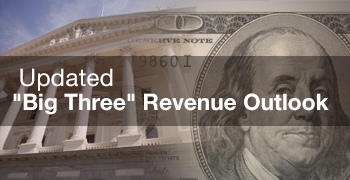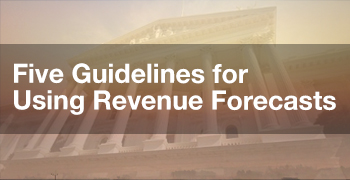
3/2015: Comparison With Other States' Job Reports April 21, 2015
The U.S. Bureau of Labor Statistics released data on states' March 2015 job reports.
3/2015: California Nonfarm Jobs Up by 39,800 April 17, 2015
California's Employment Development Department (EDD) has released preliminary jobs data for the month of March 2015. Once again, jobs increased, and the state's unemployment rate declined.
Job Sector Definitions April 17, 2015
In this background post, we describe the major nonfarm job sectors that our office tracks in monthly state jobs reports.
3/2015: Revenues $1.3 Billion Above Fiscal Year Projection April 15, 2015
This note provides information on March 2015 state tax collections.
April 15 and Accruals: Complexity April 15, 2015
This note discusses the state's complex revenue accrual rules, which affect Proposition 98 school funding and various aspects of state budgeting, in the context of the April 15 personal income tax deadline.
Limited Statewide Economic Impact of Drought April 14, 2015
This blog post responds to questions we receive regularly concerning the likely effect of the drought on the state's economy and tax revenues.
General Fund Portion of CPUC's PG&E Penalty April 9, 2015
A portion of the California Public Utilities Commission's $1.6 billion penalty against the Pacific Gas and Electric Company (PG&E) affects state General Fund budgetary revenues.
Feb. 2015 Metropolitan Area Employment Data April 9, 2015
The U.S. Bureau of Labor Statistics published its February 2015 data concerning employment in the nation's metropolitan areas on April 8, 2015.
Corporate Profits Decline in 2014 March 27, 2015
Corporate profits data released today by the Bureau of Economic Analysis show an annual decline of $17 billion, or less than 1 percent.
Bank Lending Surged in California in 2014 March 26, 2015
The Federal Reserve Bank of San Francisco recently released lending and other data for commercial banks headquartered in the West, including California, through the end of 2014.
4Q2014: California Personal Income Growing Faster Than U.S. Over Past Year March 26, 2015
The U.S. Bureau of Economic Analysis has published its estimates of state personal income through the fourth quarter of 2014.
Personal Income Definitions March 26, 2015
This post provides background information on the various data categories considered in the economic statistic known as personal income.
Placer, Bay Area, Riverside Lead in Net In-Migration March 26, 2015
New Census data show that Bay Area counties are among those in the state with the most robust in-migration in recent years.
2/2015: California Nonfarm Jobs Up 29,400 March 20, 2015
According to preliminary data from the state's Employment Development Department, California's official unemployment rate fell to 6.7% in February 2015, down from a revised 7.0% in January.
Overview of Sharing Economy and Short-Term Rentals March 19, 2015
For a joint hearing of two Assembly committees, we examine the "sharing economy" and growth of short-term rental companies like Airbnb and HomeAway.















